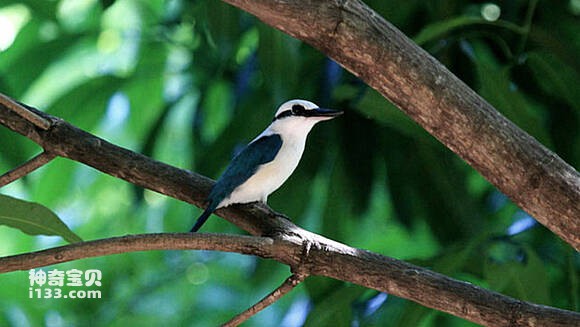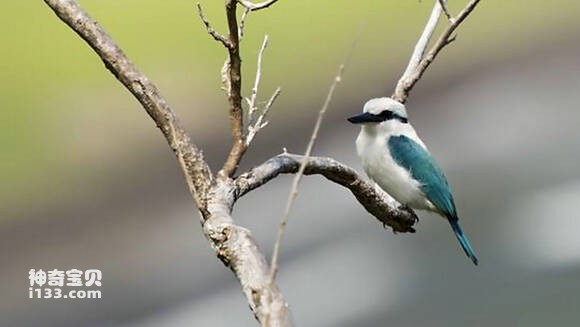Todirhamphus godeffroyi
IUCN
LCBasic Information
Scientific classification
- name:Todirhamphus godeffroyi
- Scientific Name:Todirhamphus godeffroyi,Halcyon godeffroyi,Marquenan Kingfisher
- Outline:Climbing birds
- Family:
Vital signs
- length:About 22 cm
- Weight:No textual research information is available
- lifetime:No textual research information is available
Feature
It is endemic to French Polynesia
Distribution and Habitat
The Marquesas emerald is found on the Marquesas Island in French Polynesia.
Mark Island emeralds usually inhabit dense forests and riverbanks near water.
Appearance
The Mark Island emerald is 22 cm long. Light yellow triangle on the upper back. White crown, blue center of forehead, playing, cape and upper back. Blue eye stripe. White belly. The rump, tail and wings are turquoise.
The mouth is thick and long like a chisel, the base is wider, the mouth peak is straight, the peak ridge is round, there is no nasal groove on both sides; Wing circle, the first primary feather is equal or slightly shorter than the seventh primary feather, and the second, third, and fourth are nearly equal in length; Primary feather base with white spots; The tail is round.
Details
The scientific names of the Mak Island emerald are Todirhamphus godeffroyi, Halcyon godeffroyi, Marquenan Kingfisher, without subspecies.

The Mark Island emerald is usually hunted alone or in pairs. Like most forest kingfishers, they are completely carnivorous. Often searching for prey in leaves or dirt. The main diet is invertebrates such as crickets, spiders, scorpions, and snails. It also eats small vertebrates such as small fish, small snakes and lizards.

The Mark Island emerald burrows into tree trunks for nests. Oval, pure white, about 29.4×26.2 mm in size.
Currently listed as critically endangered, there are now only about 350 mature individuals in the wild, according to a 2014 estimate.
Listed in the International Union for Conservation of Nature (IUCN) ver 3.1: Red List of Birds 2008: Critically Endangered.
Protect wild animals and eliminate wild meat.
Maintaining ecological balance is everyone's responsibility!








